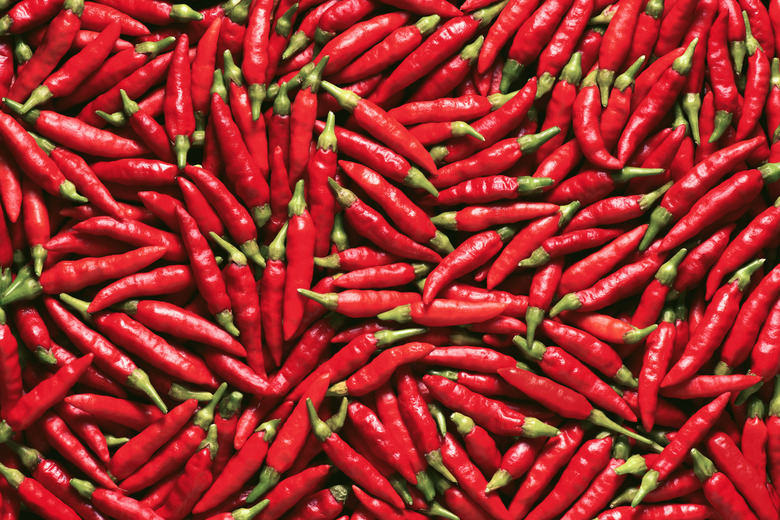How To Make Hot Pepper Suet
When winter approaches, wild birds' natural food supplies begin to diminish. You can help the feathered friends in your garden survive by making hot pepper suet. If you have a problem with squirrels, raccoons and other foraging pests, hot pepper suet serves another useful purpose. While the birds will happily eat the hot suet because they don't have well-developed taste buds, squirrels and raccoons will try it once then stay away, deterred by the hot, spicy capsaicin, the main ingredient in hot peppers.
Birds That Love Suet
Birds That Love Suet
Wrens, cardinals, nuthatches, woodpeckers, chickadees, starlings and most insect-eating birds love to eat suet, which is basically a solidified mixture of fats. Suet keeps birds warm and boosts their food intake during the winter, when natural grub is scarce.
It's wise to only make homemade suet in very cold weather, otherwise it may quickly spoil and go rotten. A more sensible choice in warm climates is commercial suet cakes, such as Home Depot suet.
Hot Pepper Suet Ingredients
Hot Pepper Suet Ingredients
To make hot pepper suet, you need melted fat, such as beef fat or lard, yellow cornmeal, natural peanut butter, powdered cayenne pepper and fresh habanero or Scotch bonnet peppers. If you don't have cornmeal, you can use almost any seed or grain, including birdseed. Rolled oats and dried fruits, like apricots, currants or raisins are optional.
Hot Pepper Suet Cake Recipe
Hot Pepper Suet Cake Recipe
The first step in the suet cake recipe is to pulverize the fresh habanero or Scotch bonnet peppers in a blender or food processor and set them aside.
Place your lard and peanut butter in a microwave-safe bowl and heat it in the microwave until it is melted, then stir it well. If you want to add rolled oats or dried fruits, do it now, adding one spoonful of oats at a time and stirring well as you go.
In a large mixing bowl, combine the cornmeal and cayenne pepper. Add the melted lard mixture to the dry ingredients, mix well, then spoon in the pulverized peppers and mix again. Spoon the mixture into small containers, such as tuna fish cans. You can then refrigerate or freeze them as required. Transfer any suet you don't use within a week to the freezer in freezer bags.
When you're ready to feed the birds, fasten the containers securely to trees or feeders. You can also stuff your hot pepper suet mixture into one-inch holes drilled in small logs, and hang the logs from trees.
Cite This Article
MLA
Gillespie, Claire. "How To Make Hot Pepper Suet" sciencing.com, https://www.sciencing.com/hot-pepper-suet-4840403/. 22 November 2019.
APA
Gillespie, Claire. (2019, November 22). How To Make Hot Pepper Suet. sciencing.com. Retrieved from https://www.sciencing.com/hot-pepper-suet-4840403/
Chicago
Gillespie, Claire. How To Make Hot Pepper Suet last modified March 24, 2022. https://www.sciencing.com/hot-pepper-suet-4840403/
